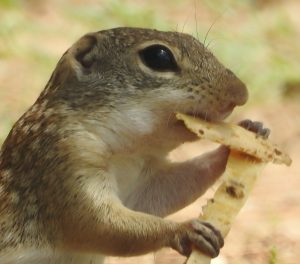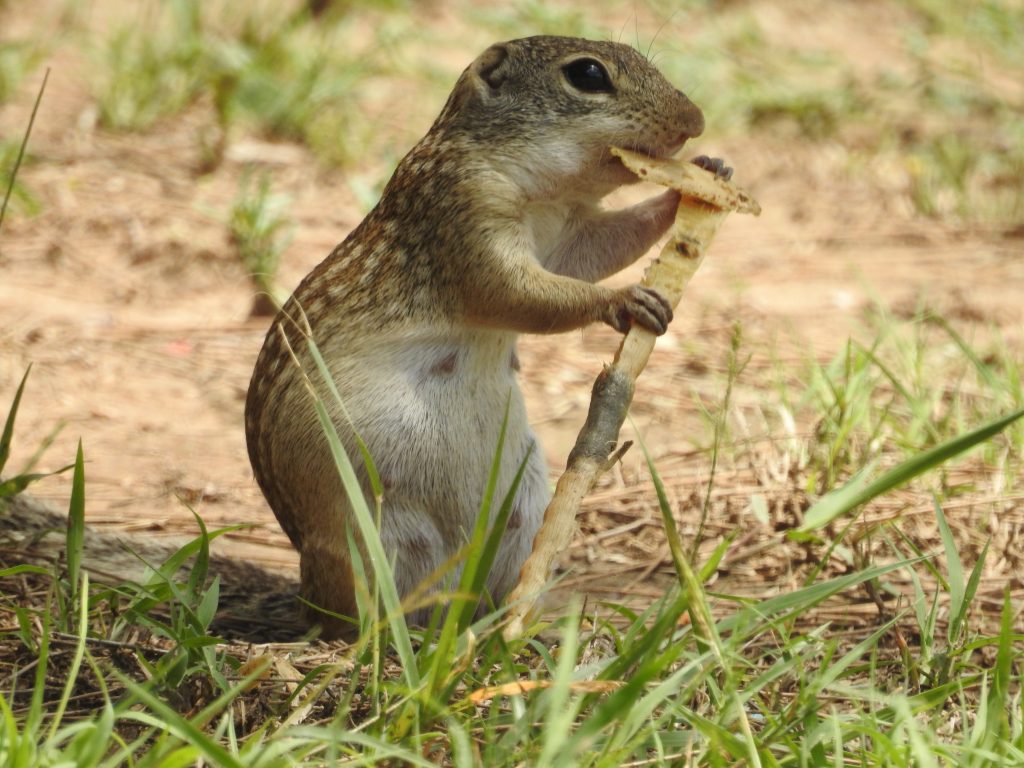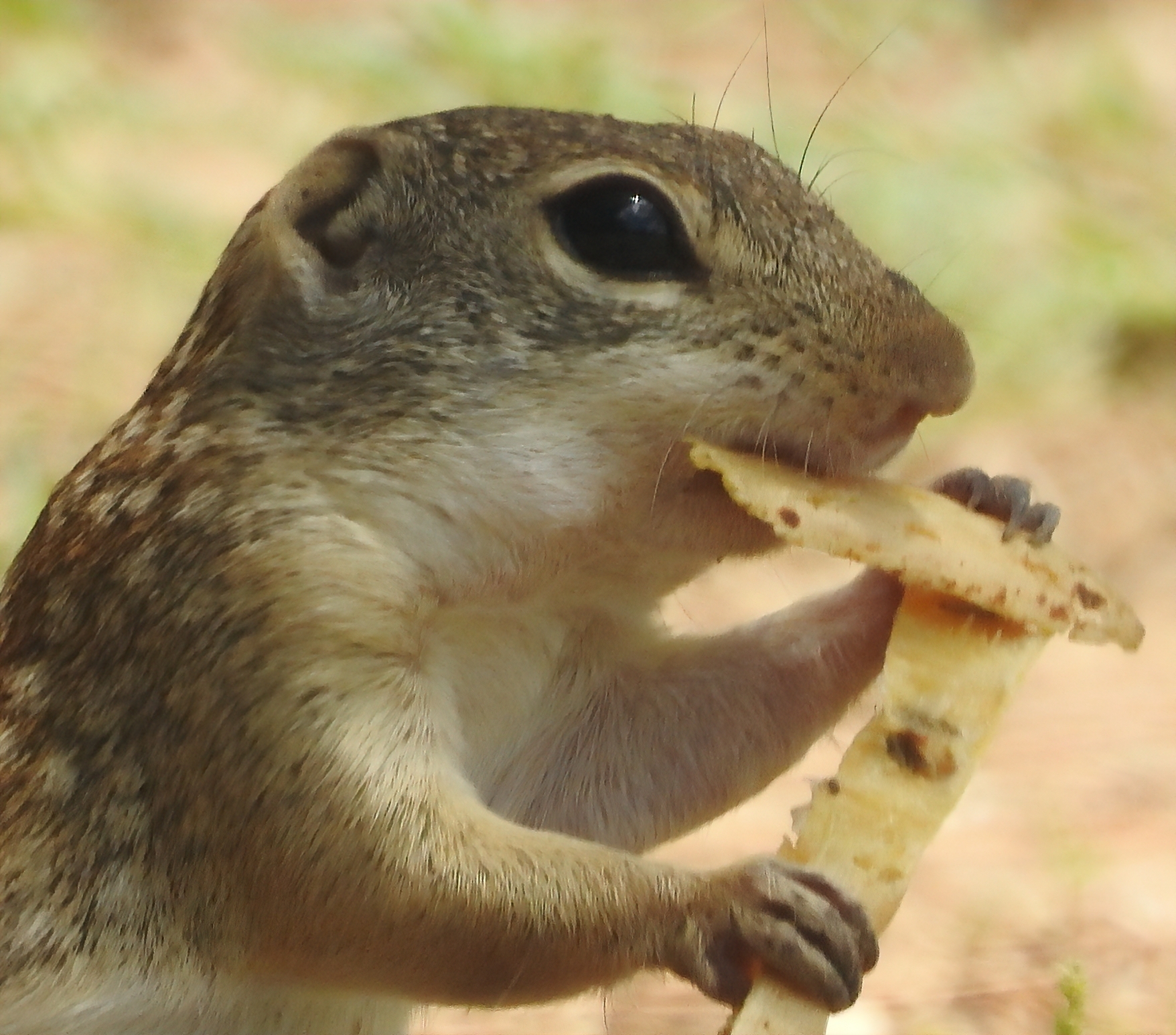by M. Kathy Raines

Wide-eyed, nose aquiver, it detected me—a lumbering giant astride a bicycle, clutching a squirrel-sized camera. Whoosh! It shot into a burrow amid patchy grass, my photo a tawny streak.
The ever-vigilant Rio Grande ground squirrel, like a rabbit or mouse, faces the daily trial of feeding itself but not becoming dinner. A coyote or hawk is no more frightening than I.
The squirrel’s tiny, backwards-pointing ears detect a rush of wings or a snake’s wriggling. Its large, almond-shaped eyes see above, to the front and side. Its sense of smell is acute. Also, it creates small, temporary burrows for escape and cover. When imperiled, it emits a shrill warning whistle.
Formerly, I held predators—bobcats, coyotes, raptors— in utmost esteem, deeming them the brains of the animal world. But the stealth and intelligence of a successful prey animal like the Rio Grande ground squirrel now fills me with awe.
One June morning I was finally able to observe this squirrel at length as I sat downwind of it under a shelter along the Historic Battlefield Trail. Sitting on its haunches, the wary creature gnawed a mesquite bean it grasped in hand-like paws.
This squirrel’s varied diet includes mesquite leaves and beans, berries, Johnson grass and a special favorite, the tuna, or fruit, of the prickly pear. It also dines on insects and occasionally, roadkill.
Nine rows of square-shaped white spots adorn the squirrel’s coat, and its underparts are white or pinkish. No longer than a foot, its tail comprises two-fifths of its length. The squirrel has powerful forearms and sharp claws, four toes on its forefeet and five in back, and soft, adhesive foot pads that grip both their food and the ground.
This squirrel thrives in sandy, gravelly soils among mesquite and cactus and in pastures, roadways, golf courses and cemeteries throughout central and western Texas except for the northern Panhandle. Locally, it shares habitat with the smaller spotted ground squirrel (Spermophilus spilosoma).
The Rio Grande ground squirrel (Ictidomys parvidens), formerly called the Mexican ground squirrel (Spermophilus mexicanus), was reclassified in 2009, DNA sequencing having revealed it a descendent of the same ancestor as prairie dogs and marmots. Many still call it by its former name.
This squirrel lives in a burrow, sometimes excavated under concrete, near vegetation that offers shade and protection. With a diameter of about 2 ½ to 3 inches, the burrow has one or often two unmarked openings—helpful for escaping a long-tailed weasel digging for the squirrel or its pups. The brood chamber is its deepest section. In cooler areas, the squirrels employ burrows for hibernation.
These squirrels breed in late March or early April, starting at about age two. Competing males may fight, but studies show it is not necessary the victor, but he who roams farthest that fathers the most children. As typical of squirrels, a litter may have several fathers. Two to ten blind, hairless young—called pups, kittens or kits—arrive after about a thirty-day gestation.
Though colony dwellers, these squirrels are not very sociable and may drive others off. In hot weather, they busy themselves during mornings and evenings, while cooler months may find them foraging midday.
This squirrel provides sustenance for raptors, cats, snakes and coyotes. Its digging may damage crops and yards, but its multiple burrows provide shelter for frogs and other creatures.


